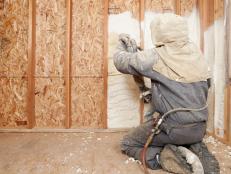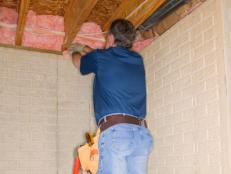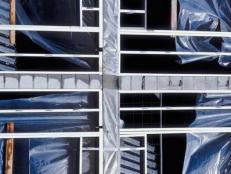Insulating Beneath the Basement Slab

Hemera Technologies
Think of the surprise and delight a new homeowner would have to find that their basement is not only usable space, but warm and comfortable as well. By taking a few extra steps, builders can toss out the notion that basements are cursed to be dank, cold and musty storage rooms.
Most basements are built in direct contact with the cold, moist ground. Concrete will absorb moisture, like a sponge, and the result is an uncomfortable, musty living space. The additional water introduced into the home can also lead to mold issues. Finding a way to keep water out of the basement will greatly improve the smell and health of the home.
Heat is also lost through the basement floor. The notion that heat always rises isn't entirely true. Heat will flow toward relatively cooler places. If ground under the home is cooler than the basement temperature, which is the case in almost every climate year round, heat will naturally try to escape through the concrete slab.
Creating an insulation layer and a vapor barrier between the concrete slab and the ground beneath it is the best practice in insulating basement floors. The insulation barrier will help keep warm air in, and the vapor barrier will keep unwanted moisture out.
Here's how to do it:
- Evenly spread the base gravel under the basement slab, keeping it 1 inch lower than the conventional method.
- Place a 1-inch layer of 4'x8' extruded polystyrene foam board over the gravel, covering the entire floor area.
- Tape the joints between the boards with builder's tape; you want to create a tight insulation layer.
- Place 5 mil. polyethylene sheets over the foam board, overlapping at least 6 inches at the seam. Make sure there are no gaps, tears, or holes in the sheets and repair any you find with builder's tape. This covering will act as the vapor barrier.
- Tape the joints with builder's tape and pour concrete as normal.







































